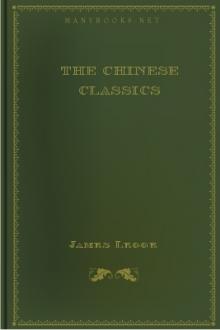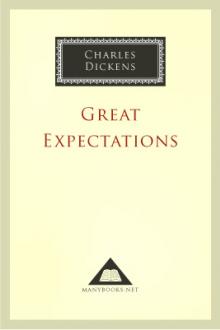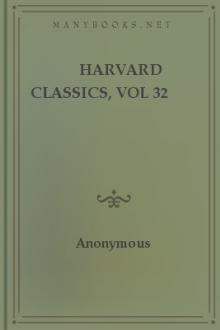The Chinese Classics (Prolegomena) by James Legge (e novels to read .txt) 📕

- Author: James Legge
- Performer: -
Book online «The Chinese Classics (Prolegomena) by James Legge (e novels to read .txt) 📕». Author James Legge
8. On the whole, the above statements will satisfy the reader of the care with which the text of the Lun Yu was fixed during the dynasty of Han.
SECTION II. AT WHAT TIME, AND BY WHOM, THE ANALECTS WERE WRITTEN; THEIR PLAN; AND AUTHENTICITY.
1. At the commencement of the notes upon the first Book, under the heading, ‘The Title of the Work,’ I have given the received account of its authorship, which precedes the catalogue
1 �i�J��.
2 ���m�q��, Bk. clxxxiv. p. 3.
3 �G��, �r�d��.
4 ���m����.
of Liu Hsin. According to that, the Analects were compiled by the disciples if Confucius coming together after his death, and digesting the memorials of his discourses and conversations which they had severally preserved. But this cannot be true. We may believe, indeed, that many of the disciples put on record conversations which they had had with their master, and notes about his manners and incidents of his life, and that these have been incorporated with the Work which we have, but that Work must have taken its present form at a period somewhat later.
In Book VIII, chapters iii iv, we have some notices of the last days of Tsang Shan, and are told that he was visited on his deathbed by the officer Mang Ching. Now Ching was the posthumous title of Chung-sun Chieh [1], and we find him alive (Li Chi, II. Pt. ii. 2) after the death of duke Tao of Lu [2], which took place B.C. 431, about fifty years after the death of Confucius.
Again, Book XIX is all occupied with the sayings of the disciples. Confucius personally does not appear in it. Parts of it, as chapters iii, xii, and xviii, carry us down to a time when the disciples had schools and followers of their own, and were accustomed to sustain their teachings by referring to the lessons which they had learned from the sage.
Thirdly, there is the second chapter of Book XI, the second paragraph of which is evidently a note by the compilers of the Work, enumerating ten of the principal disciples, and classifying them according to their distinguishing characteristics. We can hardly suppose it to have been written while any of the ten were alive. But there is among them the name of Tsze-hsia, who lived to the age of about a hundred. We find him, B.C. 407, three-quarters of a century after the death of Confucius, at the court of Wei, to the prince of which he is reported to have presented some of the Classical Books [3].
2. We cannot therefore accept the above account of the origin of the Analects,— that they were compiled by the disciples of Confucius. Much more likely is the view that we owe the work to their disciples. In the note on I. ii. I, a peculiarity is pointed out in the use of the surnames of Yew Zo and Tsang Shan, which
1 See Chu Hsi’s commentary, in loc. — �s�q�l, �|�j��, ���]��, �W��.
2 ����.
3 ���Q�����g���R�l�L; see the �d�N������, Bk. i. p. 77.
has made some Chinese critics attribute the compilation to their followers. But this conclusion does not stand investigation. Others have assigned different portions to different schools. Thus, Book V is given to the disciples of Tsze-kung; Book XI, to those of Min Tsze-ch’ien; Book XIV, to Yuan Hsien; and Book XVI has been supposed to be interpolated from the Analects of Ch’i. Even if we were to acquiesce in these decisions, we should have accounted only for a small part of the Work. It is best to rest in the general conclusion, that it was compiled by the disciples of the disciples of the sage, making free use of the written memorials concerning him which they had received, and the oral statements which they had heard, from their several masters. And we shall not be far wrong, if we determine its date as about the end of the fourth, or the beginning of the fifth century before Christ.
3. In the critical work on the Four Books, called ‘Record of Remarks in the village of Yung [1],’ it is observed, ‘The Analects, in my opinion, were made by the disciples, just like a record of remarks. There they were recorded, and afterwards came a first-rate hand, who gave them the beautiful literary finish which we now witness, so that there is not a character which does not have its own indispensable place [2].’ We have seen that the first of these statements contains only a small amount of truth with regard to the materials of the Analects, nor can we receive the second. If one hand or one mind had digested the materials provided by many, the arrangement and the style of the work would have been different. We should not have had the same remark appearing in several Books, with little variation, and sometimes with none at all. Nor can we account on this supposition for such fragments as the last chapters of the ninth, tenth, and sixteenth Books, and many others. No definite plan has been kept in view throughout. A degree of unity appears to belong to some books more than others, and in general to the first ten more than to those which follow, but there is no progress of thought or illustration of subject from Book to Book. And even in those where the chapters have
1 �_���y��,— �_��, ‘the village of Yung,’ is, I conceive, the writer’s nom de plume.
2 ���y�Q�O�����l, �p�y���@��, �O�b����, �������@����, �������z�o����, �U �r�L�@����.
a common subject, they are thrown together at random more than on any plan.
4. We cannot tell when the Work was first called the Lun Yu [1]. The evidence in the preceding section is sufficient to prove that when the Han scholars were engaged in collecting the ancient Books, it came before them, not in broken tablets, but complete, and arranged in Books or Sections, as we now have it. The Old copy was found deposited in the wall of the house which Confucius had occupied, and must have been placed there not later than B.C. 211, distant from the date which I have assigned to the compilation, not much more than a century and a half. That copy, written in the most ancient characters, was, possibly, the autograph of the compilers.
We have the Writings, or portions of the Writings, of several authors of the third and fourth centuries before Christ. Of these, in addition to ‘The Great Learning,’ ‘The Doctrine of the Mean,’ and ‘The Works of Mencius,’ I have looked over the Works of Hsun Ch’ing [2] of the orthodox school, of the philosophers Chwang and Lieh of the Taoist school [3], and of the heresiarch Mo [4].
In the Great Learning, Commentary, chapter iv, we have the words of Ana. XII. xiii. In the Doctrine of the Mean, ch. iii, we have Ana. VI. xxvii; and in ch. xxviii. 5, we have substantially Ana. III. ix. In Mencius, II. Pt. I. ii. 19, we have Ana. VII. xxxiii, and in vii. 2, Ana. IV. i; in III. Pt. I. iv. 11, Ana. VIII. xviii, xix; in IV. Pt. I. xiv. 1, Ana. XI. xvi. 2; in V. Pt. II. vii. 9, Ana. X. xiii. 4; and in VII. Pt. II. xxxvii. 1, 2, 8, Ana. V. xxi, XIII. xxi, and XVII. xiii. These quotations, however, are introduced by ‘The Master said,’ or ‘Confucius said,’ no mention being made of any book called ‘The Lun Yu,’ or Analects. In the Great Learning, Commentary, x. 15, we have the words of Ana. IV. iii, and in
1 In the continuation of the ‘General Examination of Records and Scholars (�����m�q��),’ Bk. cxcviii. p. 17, it is said, indeed, on the authority of Wang Ch’ung (���R), a scholar of our first century, that when the Work came out of the wall it was named a Chwan or Record (��), and that it was when K’ung An-kwo instructed a native of Tsin, named Fu-ch’ing, in it, that it first got the name of Lun Yu:— �Z���o���y�_������, ���W����, ���w���H�j�������H����, �l���� �y. If it were so, it is strange the circumstance is not mentioned in Ho Yen’s preface.
2 ����.
3 ���l, �C�l.
4 ���l.
Mencius, III. Pt. II. vii. 3, those of Ana. XVII. i, but without any notice of quotation.
In the writings of Hsun Ch’ing, Book I. page 2, we find something like the words of Ana. XV. xxx; and on p. 6, part of XIV. xxv. But in these instances there is no mark of quotation.
In the writings of Chwang, I have noted only one passage where the words of the Analects are reproduced. Ana. XVIII. v is found, but with large additions, and no reference of quotation, in his treatise on ‘Man in the World, associated with other Men [1].’ In all those Works, as well as in those of Lieh and Mo, the references to Confucius and his disciples, and to many circumstances of his life, are numerous [2]. The quotations of sayings of his not found in the Analects are likewise many, especially in the Doctrine of the Mean, in Mencius, and in the Works of Chwang. Those in the latter are mostly burlesques, but those by the orthodox writers have more or less of classical authority. Some of them may be found in the Chia Yu [3], or ‘Narratives of the School,’ and in parts of the Li Chi, while others are only known to us by their occurrence in these Writings. Altogether, they do not supply the evidence, for which I am in quest, of the existence of the Analects as a distinct Work, bearing the name of the Lun Yu, prior to the Ch’in dynasty. They leave the presumption, however, in favour of those conclusions, which arises from the facts stated in the first section, undisturbed. They confirm it rather. They show that there was abundance of materials at hand to the scholars of Han, to compile a much larger Work with the same title, if they had felt it their duty to do the business of compilation, and not that of editing.
SECTION III. OF COMMENTARIES UPON THE ANALECTS.
1. It would be a vast and unprofitable labor to attempt to give a list of the Commentaries which have been published on this Work. My object is merely to point out how zealously the business of interpretation was undertaken, as soon as the text had been
1 �H���@.
2 In Mo’s chapter against the Literati, he mentions some of the characteristics of Confucius in the very words of the Tenth Book of the Analects.
3 �a�y.
recovered by the scholars of the Han dynasty, and with what industry it has been persevered in down to the present time.
2. Mention has been made, in Section I. 6, of the Lun of prince Chang, published in the half century before our era. Pao Hsien [1], a distinguished scholar and officer, f the reign of Kwang-wu [2], the first emperor of the Eastern Han dynasty, A.D.
25-57, and another scholar of the surname Chau [3], less known but of the





Comments (0)